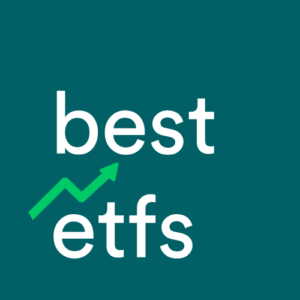In this short article, I’ll explain how simple it can be to provide a valuation of a bank share such as Macquarie Group Ltd (ASX:MQG). However, while it may seem ‘simple’ to create a valuation model of a company, no share valuation is gauranteed. If ‘value investing’ were as easy as I’m about to show you, everyone — including me — would be a millionaire!
Our largest bank shares make up nearly half of the local share market, measured by the market capitalisation of the largest 200 companies in the S&P/ASX 200 index.
If you really want to understand how to value a dividend share, like a bank or REIT, you should consider watching the tutorial video from the analyst team at Rask Australia.
You can subscribe to the Rask Australia YouTube channel and receive the latest (and free) value investing videos by clicking here.
[ls_content_block id=”3301″]
Simple valuations using ratios
Chances are, if you have been actively investing in shares for more than a few years you will have heard about the PE ratio. The price-earnings ratio or ‘PER’ compares a company’s share price (P) to its most recent full-year earnings per share (E). If you bought a coffee shop for $100,000 and it made $10,000 of profit last year, that’s a price-earnings ratio of 10x ($100,000 / $10,000). ‘Earnings’ is just another word for profit. So, the PE ratio is basically saying ‘price-to-yearly-profit multiple’.
The PE ratio is a very simple tool but it’s not perfect so it should only be used with other techniques (see below) to back it up. That said, one of the simple ratio strategies even professional analysts will use to value a share is to compare the company’s PE ratio with its competitors to try to determine if the share is overvalued or undervalued. It’s akin to saying: ‘if all of the other banking sector stocks are priced at a PE of X, this one should be too’. We’ll go one step further than that in this article. We’ll apply the principle of mean reversion and multiply the profits per share (E) by the sector average PE ratio (E x sector PE) to calculate what an average company would be worth.
Using MQG’s share price today, plus the earnings per share data from its 2019 financial year, I calculate the company’s PE ratio to be 17.4x. This compares to the banking sector average of 12x.
Reversing the logic here, we can take the profits per share (EPS) ($6.949) and multiply it by the ‘mean average’ valuation for MQG. This results in a ‘sector-adjusted’ share valuation of $80.04.
[ls_content_block id=”3409″ para=”paragraphs”]
Dividend income examined
A dividend discount model or DDM is different to ratio valuation like PE because it makes forecasts into the future, and uses dividends. Because the banking sector has proven to be relatively stable with regards to share dividends, the DDM approach can be used. However, we would not use this model for, say, technology shares.
Basically, we need only one input into a DDM model: dividends per share. Then, we make some assumptions about the yearly growth of the dividend (e.g. 2%) and the risk level of the dividend payment (e.g. 7%). I’ve used the most recent full year dividends (e.g. from 2019/2020) then assumed the dividends remain consistent but grow slightly.
To keep it simple, I’ll assume last year’s annual dividend payments are consistent. Warning: last year’s dividends are not always a good input to a DDM because dividends are not guaranteed since things can change quickly inside a business — and in the stockmarket. So far in 2020, the Big Banks have been cutting or deferring their dividends.
In any case, using my DDM we will assume the dividend payment grows at a consistent rate in perpetuity (i.e. forever), for example, at a yearly rate between 1.5% and 3%.
Next, we have to pick a yearly ‘risk’ rate to discount the dividend payments back into today’s dollars. The higher the ‘risk’ rate, the lower the share price valuation.
I’ve used a blended rate for dividend growth, and I’m using a risk rate between 9% and 14%.
My DDM valuation of MQG shares is $69.38. However, using an ‘adjusted’ dividend payment of $4.00 per share, the valuation drops to $45.49. The valuation compares to Macquarie Group Ltd’s share price of $121.00.
How to make sense of this
These two models could be used a guide to the valuation process and analysing a bank share like Macquarie Group Ltd. If I were looking at the shares and considering an investment, I’d first want to know more about the bank’s growth strategy. For example, are they pursuing more lending (i.e. interest income) or more non-interest income (fees from financial advice, investment management, etc..
Next, I’d take a close look at economic indicators like unemployment, house prices and consumer sentiment. Where are they headed? Finally, it’s always important to make an assessment of the management team. For example, when we pulled data on MQG’s culture we found that it wasn’t a perfect 5/5. Culture is one thing to think carefully about.
[ls_content_block id=”3302″ para=”paragraphs”]



